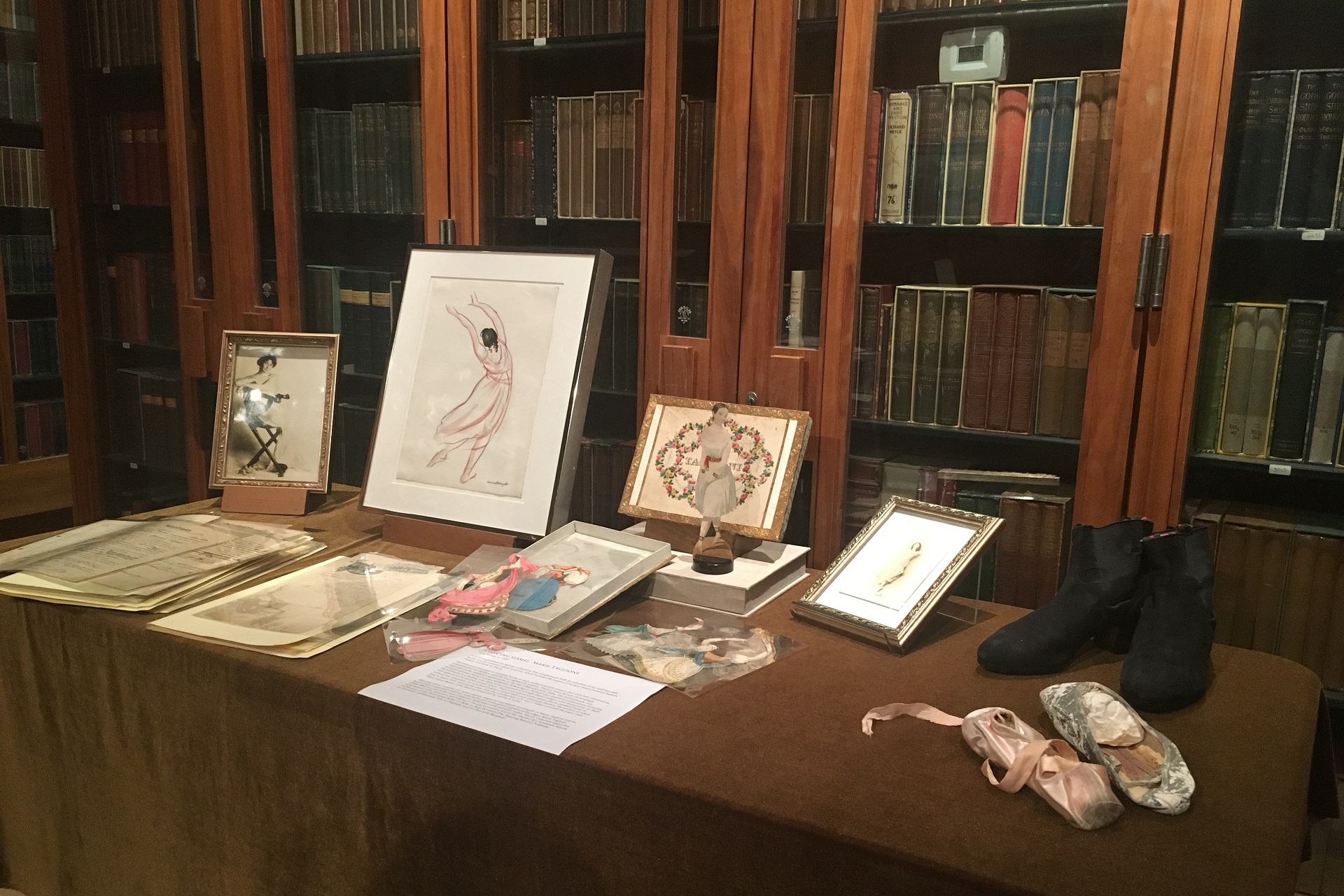By Daina Coffey
Daina Coffey is Dance/USA’s second Dance Archiving & Preservation Fellow. Her Fellowship, which ran from August-December 2018, was hosted by the Chicago Dance History Project, and her practicum site was Joel Hall Dancers. Read more about the Fellowship program here and read her second, third, and fourth blog posts.
October 4, 2018: What is an Archive?
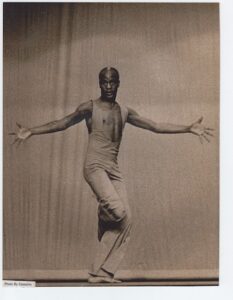
Joel Hall performing in My Love (1969). Photography by Czeschin.
Historians are essentially storytellers, and most of the sources that feed our stories are to be found in an endless series of acid-free boxes lining the shelves in a dark and cool climate-controlled room. But what is an archive, actually?
As I started the Fellowship in Dance Archiving and Preservation with the Chicago Dance History Project through Dance/USA, I thought I had a clear idea of what constitutes an archive. But—to my embarrassment—I discovered that I had not given the concept of “the archive” nearly enough thought.
One of my first tasks at CDHP was to assess the archival materials at the Joel Hall Dance Center, a 40-plus year old Chicago dance company and studio. Joel Hall—dancer, teacher, choreographer, and artistic director—is himself an institution in the Chicago dance world and beyond. As he transitions into semi-retirement, his studio is gearing up to perform the Legacy Concert in 2019, which will include one piece choreographed by Hall from each decade since the company’s founding in 1974. Meanwhile, CDHP is scheduled to curate an exhibit, The Joel Hall Dancers Legacy, focusing on the historical performances from the Legacy Concert for Chicago Open Archives on October 17 and 18.
My job was to identify photographs, videos, programs, and other ephemera from each of the performances: Night Walker (1979), Caliente Por Favor (1986), El Gato Negro (1992), Y2Day (2000), and Anja: The Unexpected (2015). Like many dance companies, JHDC has a ton of materials, not many of which are organized and labeled in a consistent fashion. Yet, with the invaluable advice of Jenai Cutcher, Executive Director of the CDHP and my supervisor, as well as the vast institutional knowledge of Jacqueline Sinclair, the newly appointed Artistic Director at JHDC, I was able to locate a fair amount of materials.
However, the new problem has become how to curate and display these invaluable documents and objects. And here is where I started to think more deeply about the construction of an archive. Jenai and I met with the remarkable CDHP board member and art historian, Elizabeth Liebman, at the dance studio to develop a plan for displaying the archival materials. It was Liz who first prompted us to think critically about the JHDC exhibit as the representation of not just an archive, but a dance archive, and what that means.
As such, as we weave together these materials to tell a larger story about the legacy of JHDC, we must consider a number of factors. For example, how does a dance company use its own archive? Often for dancers, the archive is a means to reproduce older works—watching a video to see how a dancer moved in the original piece; viewing a photograph to see how costumes moved; examining lighting cues to understand the original lighting design concept. In other words, for dancers, the archive is a living, breathing thing—it is something with which they regularly engage.
So, as noted above, as a historian and aspiring archivist, I find myself in a fortunate position. Through diving headfirst into this project, I’m discovering that archives are not just a physical place, but a process that is continually in flux. People are constantly in conversation with the archive—whether an archivist like me who is making decisions about what to preserve or display in an exhibit or a dancer reviewing old footage or photos to recreate a piece or to draw inspiration for a new performance.
As we continue to develop this exhibit for October, I’m hoping to think more carefully about how to tell a story not just about the history of JHDC (which is significant in its own right), but also how to tell the story of a dance archive—what it is, what it does, and what it means. I’m looking forward to this journey.
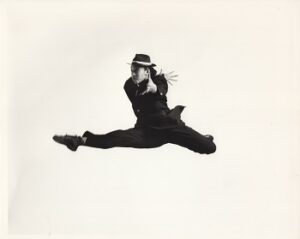
Tracy Hodgkin-Valcy leaping through the air in revival of El Gato Negro in 1994.
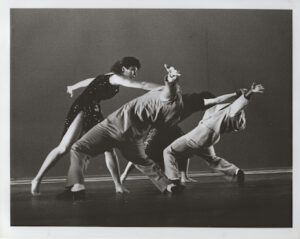
Scene from performance of Night Walker (1979). Photographer unknown.
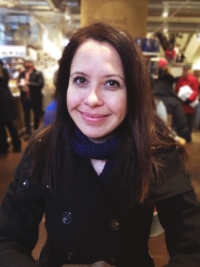 Daina Coffey is a Ph.D. Candidate studying U.S. history at the University of Chicago, where her teaching and research focuses on race, gender, and capitalism as well as urban and legal history. Deeply interested in digital preservation and records management, issues of accessibility, and curatorial practices, she has worked at a number of archives including the Bancroft Library at U.C. Berkeley, the Seaver Center for Western History Research at the Natural History Museum of Los Angeles, and the Special Collections and Research Center at the University of Chicago. Daina is thrilled to develop her archival skill set through working with local artists and dance-legacy materials at the Chicago Dance History Project this fall.
Daina Coffey is a Ph.D. Candidate studying U.S. history at the University of Chicago, where her teaching and research focuses on race, gender, and capitalism as well as urban and legal history. Deeply interested in digital preservation and records management, issues of accessibility, and curatorial practices, she has worked at a number of archives including the Bancroft Library at U.C. Berkeley, the Seaver Center for Western History Research at the Natural History Museum of Los Angeles, and the Special Collections and Research Center at the University of Chicago. Daina is thrilled to develop her archival skill set through working with local artists and dance-legacy materials at the Chicago Dance History Project this fall.
____
We accept submissions on topics relevant to the field: advocacy, artistic issues, arts policy, community building, development, employment, engagement, touring, and other topics that deal with the business of dance. We cannot publish criticism, single-company season announcements, and single-company or single artist profiles. Additionally, we welcome feedback on articles. If you have a topic that you would like to see addressed or feedback, please contact communications@danceusa.org.
Disclaimer: Opinions expressed in guest posts do not necessarily represent the viewpoints of Dance/USA.



